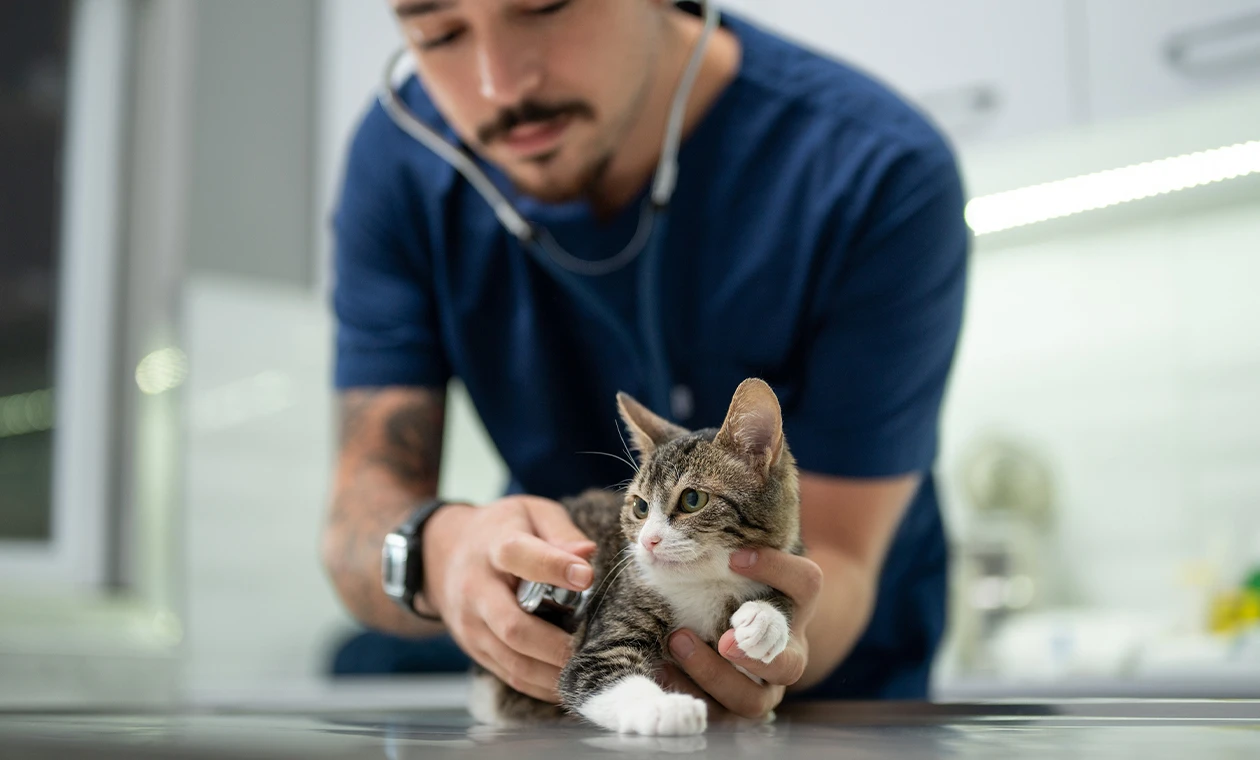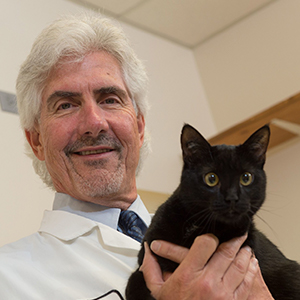On-Demand
Southern
Veterinary
Conference
On-Demand
/
August 31 – December 31
/
90 CE Hours



In this lecture, Dr. Barletta reviews the mechanism of action, doses, and the duration of action of drugs used to premedicate small animal patients. Drug classes discussed include: phenothiazines, alpha-2 agonists, opioids, and benzodiazepines. Examples of drug combinations for dogs and cats will be discussed.
The audience will earn about Simbadol, Zorbium, Zenalpha, and Nocita. Dr Barletta will discuss indications, shelf life, and contraindications listed in the label. The lecture will cover the literature published on the off-label use of these drugs and the important information we can gather from these published data. Dr. Barletta will also discuss his personal experience using these drugs in anesthetic protocols for his patients.
In this lecture Dr. Barletta reviews the proper technique used to perform nerve blocks of the thoracic limb and pelvic limb. Nerve blocks discussed include: brachial plexus block, RUMM block, Bier block, sciatic/femoral block, and epidural injection. Dr. Barletta will demonstrate how to perform these block using a blind technique or with the aid of a nerve stimulator and/or an ultrasound machine.
In this lecture, Dr. Barletta reviews how mechanical ventilators work and the different types available for clinical use in anesthesia. The audience will learn how set up and leak test a ventilator, when a ventilator should be used and potential complications due to inappropriate use and malfunction.

Chronic pain can be very difficult to treat, but treatment is imperative for the patient’s health, behavior and quality of life. A variety of pharmacologic and non-pharmacologic treatments for chronic pain will be discussed and evidence of efficacy presented.
Animals hide pain as part of a strong evolutionary survival response. But scientifically we know they feel pain and we need to actively look for pain in our patients/pets. Scoring systems for acute and chronic pain identification in dogs and cats will be described.
Local anesthetic drugs are very effective analgesics. They are also largely easy to use and inexpensive. The use of local/regional blocks improves anesthetic safety and provides analgesia, even after the expected duration of action of the drug. Blocks that can be used in ANY practice will be cover in a step-by-step description, complete with videos.
Local blocks continued with more videos!

This presentation will focus on the anatomic variations and preoperative considerations among brachycephalic breeds. We will discuss several surgical procedures available to address the various components of brachycephalic airway syndrome. While surgical intervention is often necessary for management of this disease, it is not without considerable risks. Therefore, surgical risks and management of postoperative complications will be presented.
This presentation will focus on the classification and surgical management of various external and internal abdominal hernias. Specifically, we will review the relevant anatomy for various abdominal hernias including umbilical, inguinal, scrotal, incisional, traumatic, diaphragmatic, peritoneopericardial diaphragmatic, and perineal hernias. Lastly, we will discuss the preoperative considerations, surgical techniques, and postoperative complications for the specific abdominal hernias mentioned above.
This presentation will focus on the importance of sentinel lymph node detection in the staging of dogs with cutaneous and subcutaneous mast cell tumors. Various sentinel lymph node mapping techniques will be introduced, including the use of water-soluble iodinated contrast medium injected peritumorally and assessed with digital radiography. This technique can be performed without the use of advanced imaging equipment, making it a practical diagnostic test in general practice.

This lecture discusses common causes of forelimb lameness in dogs including elbow dysplasia, OCD, carpal hyper-extension, angular limb deformity, and cervical injuries.
This lecture discusses intra-operative techniques and observations to make sure your patient is doing well. It also discusses how to tell if tissue is healthy and when to be concerned and the steps that are taken when something does not seem right.

In this lecture, Dr. Lappin will update the attendees on the newer finding concerning the diagnosis, treatment and prevention of this commonly infection.
In this two part lecture, Dr. Lappin will update the audience on about 20 hot topics in feline infectious diseases. He will give an update on common flea and tick diseases of cats as well as provide an update on optimal use of FVRCP vaccines, including use of intranasal products for both prevention and treatment of FHV-1. He will also provide an update on injections site sarcoma’s and prevention of feline leukemia virus infection.
In this two part lecture, Dr. Lappin will update the audience on about 20 hot topics in feline infectious diseases. He will give an update on common flea and tick diseases of cats as well as provide an update on optimal use of FVRCP vaccines, including use of intranasal products for both prevention and treatment of FHV-1. He will also provide an update on injections site sarcoma’s and prevention of feline leukemia virus infection.
In this two part lecture, Dr. Lappin will update the audience on about 20 hot topics in canine infectious diseases. He will give an update on common flea and tick diseases of dogs as well as provide an update on optimal use of Borrelia, Leptospira, and CIRDC vaccines.
In this two part lecture, Dr. Lappin will update the audience on about 20 hot topics in canine infectious diseases. He will give an update on common flea and tick diseases of dogs as well as provide an update on optimal use of Borrelia, Leptospira, and CIRDC vaccines.

This 1-hour lecture will cover the radiographic anatomy of the small animal cardiac silhouette and pulmonary vasculature. Common radiographic changes associated with various acquired and congenital cardiac diseases will be reviewed.
This 1-hour lecture will review the three main radiographic pulmonary patterns in small animal thoracic radiography and their associated imaging findings. The radiographic findings of various pulmonary diseases will be reviewed.
This 1-hour lecture will cover the radiographic appearance of the stomach and small intestines, with focus on various causes of vomiting. Ultrasound of the stomach, small intestines, and pancreas will be reviewed, and common sonographic abnormalities associated with these organs in vomiting patients will be discussed.

Dr. Mauterer will cover a variety of respiratory conditions that are seen in practice that require a knowledge of surgery. This hour will be a case-based. presentation of real world cases. The good, the bad, and the ugly outcomes will be discussed and reviewed in order to help improve future outcomes.
This presentation will cover the differentials and the diagnostic approach for several conditions that cause cervical pain. This is a case based lecture with a practical approach to apply in one’s practice. Disc disease will be concisely covered as part of the list of differentials but is not the primary focus of the presentation.
This presentation will take this traditional repair in a step-by-step fashion with video and point out all the nuance factors that are commonly left out of any textbook of journal article. This presentation is designed for the beginner or experienced surgeon to hone this technique and help limit poor outcomes.

Epidermal barrier dysfunction in atopic dermatitis has been a hot area of research. We will examine various therapeutic modalities intended to help improve epidermal barrier dysfunction, thereby aiming to reduce pruritus and other clinical signs in dogs with atopic patients. Cases will also be discussed.
Various causes of pododermatitis, including nail diseases, in dogs and cats will be discussed with an emphasis on diagnosis and treatment.
Discussion on a potpourri of quick tips that are practical and easy to use in practice so as to help improve the outcome of your patients with dermatological problems.
Clinical updates for the general practitioner from the North American Veterinary Dermatology Forum and recent veterinary dermatology publications.

Dogs can become infected with many infectious agents, but the “unholy trinity” of roundworm, hookworm and whipworm, are among some of the most common and well-known. For many reasons, including persistence of infectious stages in the environment and zoonotic potential, it is advantageous to prevent these parasites. In this lecture, we will cover prevention and biology of these three important parasites.
Heartworm infection can be life threatening. Due to the pathologic changes that occur due to heartworm infection, appropriate treatment of heartworm is a necessity. In this lecture, we will cover the basics of biology and treatment, as well as current controversies.
Heartworm infection can be life threatening. Due to the pathologic changes that occur due to heartworm infection, appropriate treatment of heartworm is a necessity. In this lecture, we will cover the basics of biology and treatment, as well as current controversies.

With 70% of hospitals struggling with staff shortages, you need ways to increase productivity and reduce job stress. Get 10 efficiency tips you can implement right now.
When clients run your schedule, you get CHAOS! Learn how to lead scheduling calls for shorter call times, 3 appointment types to pre-block, and organize exams for efficient workflow.
Leverage technicians and assistants to work at the top of their licenses and skillsets. Get nurse appointment guidelines and find out how to charge for technician appointments.
Learn how to respond when clients turn into bullies, arrive late for appointments, demand appointments but your schedule is full, and argue about drug-monitoring tests for refills.
Stop spending 3 hours a day on outside pharmacy requests. Learn how to create a refill process, set up refill reminders, and take payment through apps and stored credit cards.
You need to retain employees and create a culture of collaboration. Find out how to create job tiers for support staff, get examples of skill checklists, and what to pay as employees advance.
Learn conflict-resolution techniques for the no-show client, explosive client, undecided client, time-sucking client, and know-it-all client.

In this session, we will review how to evaluate a dog or cat with suspected vestibular disease in order to confirm the problem and localize the disease to the peripheral or central nervous system. We will review the common causes of both peripheral or central vestbular disease and address how to treat for the treatable in call cases.
We will use a case-based approach to describe the clinical signs, work up and potential causes of inflammation affecting the CNS. The treatment of unknown and suspected cases will be dealt with during this session.
The drugs available, the side effects and how to use them will be discussed for the management of dogs with difficult to control seizures. Adjunctive alternative approaches will also be discussed.
In this session, we will review the types of disc disease that can affect dogs and the clinical signs which result. We will outline the diagnostic work and the treatment options available based upon the severity of the clinical signs.
Description coming soon…
Description coming soon…

In this lecture we will overview the importance of water for the body. We will overview hydration homeostasis and how cats may not be as efficient as hydrating themselves as their canine counterparts and why this may be problematic for long-term health. We’ll further look into a couple studies evaluating supplement using osmolytes can improve overall fluid intake, urine output volume, and other urinary measures in cats.
In this lecture we will discuss obesity as it pertains to the prevalence of dogs and cats in the US and the health concerns this predisposes them to. We will overview the metabolic responses excess weight causes systemically by evaluating its effects on hormones and cytokines. The lecture will also cover weight loss strategies from early prevention to the importance of particular nutrients during weight loss as well as client communication advice to help achieve a realistic and success plan for your patient and client.
We will briefly start the lecture defining canine cognitive dysfunction syndrome, its prevalence, as well as risk factors and clinical signs. The lecture will stress the importance of early diagnosis and how best to go about this in addition to current intervention and treatment recommendations. In evaluating treatment, this lecture will also evaluate a study using a specifically formulated diet to help improve clinical signs associated with canine cognitive dysfunction syndrome.
This lecture will overview the normal cardiac anatomy and the pathophysiology of myxomatous mitral valve disease (MMVD) as well as current ACVIM classification. We will further look into particular nutrients and their importance in cardiac cachexia in addition to the metabolic differences seen in dogs with MMVD. The lecture will conclude with evaluating two studies where a diet was created to address those metabolic differences in dogs with MMVD targeting specific nutrients and its effects on those dogs.

Adrenal disease can be challenging not only in diagnosis (test selection and interpretation) but also in both acute and long-term treatment and monitoring. This talk will cover Cushing’s disease, Addison’s disease, and other adrenal gland diseases with an emphasis on diagnosis, monitoring, and updated treatment recommendations.
This talk will review current recommendations for diagnosing endocrine disease; which patients, which tests, and how to interpret results. The importance of understanding prevalence, pre-test probability of disease, and assessing and managing comorbidities will be covered. Updated treatment recommendations for the most common endocrine disorders will be discussed.
TopicDescriptionThis talk will provide a holistic approach to choosing the most appropriate diagnostic screening in well and non-well patients. Age-appropriate evaluation and common diseases in each life stage will be covered. The clinical value of establishing individual patient normals and trending to allow early detection of disease will be emphasized. Updated treatment recommendations for selected conditions in each life stage will be reviewed.
All veterinary practices encounter emergency patients. This talk focuses on the value of hematology in the initial assessment and ongoing management of emergent or critical patients. All components of hematology will be covered including quick assessment tests packed cell volume and total solids (PCV/TS), the CBC report, analyzer graphics, and peripheral blood film review. Diagnostic tips and current treatment recommendations for common hematologic problems will be provided.
This talk will provide a practical approach for patient specific preanesthetic screening including diagnostics. Recently published anesthesia guidelines will be reviewed including best practices before, during, and after anesthesia. The importance of preanesthetic laboratory assessment and how results aid in determining whether to proceed, stop, or alter anesthetic protocols will be discussed.
Senior patients present a diagnostic and management challenge due to increased incidence of age-related disorders, presence of concurrent conditions, and decreased physiologic reserves. This talk will provide a practical case-based approach for assessing and treating common diseases in older dogs and cats.

This seminar will focus primarily on the surgical management of GDV patients. Video of clinical cases during intraoperative decision making will be presented. We will focus on the authors’ preferred method for gastric derotation and the technical aspects of performing a 15-minute incisional gastropexy. Extensive use of video of clinical cases will give participants a real-life experience.
Feline perineal urethrostomy has classically been approached with the patient placed in a perineal position. Although this positioning is awkward for the surgeon it has become the standard approach. This lecture will suggest taking another look at patient positioning. Placing the cat in dorsal recumbency allows for a much more ‘ergonomic’ approach for the surgeon and enhances visualization of the regional anatomy. In addition, this positioning allows access to the patients’ urinary bladder. Video of this novel approach will be used to illustrate the advantages of dorsal recumbency positioning.
Placement of a feeding tube is frequently indicated for the management of nutritionally deficient and critically injured patients. This session will describe an easier and safer technique for placing an esophagostomy feeding tube in a dog or cat. Video will be used to illustrate placement technique.
This lecture will focus on a technique used to ‘percutaneously’ place a chest tube in ‘awake’ dogs and cats. New technology has been developed to allow chest drain placement in non-anesthetized patients. Videotape of clinical cases requiring ‘emergency’ chest drain placement will be used to illustrate this new technology.
Anal sacculectomy is frequently performed in veterinary practice. It can be tricky to get all the anal sac epithelium and preserve the external anal sphincter muscle and caudal rectal nerve. I will suggest a ‘novel’ technique that allows the surgeon full control of the perianal anatomy and thus preservation of all vital structures during complete anal sac resection. Video showing this technique in a clinical case will illustrate its potential usefulness in your practice.
Years ago, the anatomist suggested that in order to safely remove the spleen the left gastroepiploic artery and vein must be preserved, or the gastric blood supply would be put at risk. We now know this is not true! I will suggest a way to use this new anatomic information to safely remove the spleen in a non-GDV patient with 4 (maybe 5) ligations. We will then utilize this new knowledge of anatomy to develop a ‘plan’ to rapidly and safely remove the spleen in a dog that is bleeding to death!
Surgical management of gall bladder mucocele varies somewhat depending on the stage of gall bladder mucocele presentation; i.e., early presentation, late presentation, or presentation after gall bladder rupture. Video examples of each presentation will be used to illustrate the impact each stage of presentation has on the difficulty of surgical manipulation during cholecystectomy.
This session will discuss the management of upper airway obstruction in brachycephalic breeds. Emphasis will be placed on nasoplasty and soft palate resection. A novel technique for nasal planum resection will be discussed. There is compelling evidence suggesting that not all everted laryngeal saccules need to be resected! Videotape will be used to illustrate surgical techniques.
Think of the most difficult location to bandage a wound……this seminar will suggest a method of how you can ‘bandage that wound’! Also……can you force a wound to continue to contract….…oh yes you can! Videotape of these selected ‘secrets’ to facilitate wound management will be discussed.

This 50 minute lecture discusses respiratory therapeutics, including steroids, bronchodilators, and cough suppressants. Indications, benefits, and expected responses will be covered. Emphasis will be on treatment of tracheal collapse, chronic bronchitis, and feline asthma.
This 50 minute lecture focuses on the use of oral and inhaled steroids for respiratory conditions. Indications, dosages, and steroid options will be discussed in detail. Contraindications as well as clinical scenarios where steroids may not benefit will be covered.
This 50 minute lecture is dedicated to the diagnosis and treatment of pancreatitis, cholangitis/cholangiohepatitis, and hepatic lipidosis in cats. Clinical presentation and bloodwork findings, definitive and empirical therapies, and expected outcomes will be discussed in detail, with case examples.
This 50 minute lecture highlights the common causes of chronic enteropathies, including food-responsive enteropathy, infectious enteropathies, and protein-losing enteropathies. There is a heavy focus on new terminology/classification schemes as well as distinguishing enteropathies that need immunosuppressant therapy vs those that do not.

Review of diagnostic strategy, importance of obtaining a thorough and accurate history, and best tests and when they should be performed.
Everything from endoscopy for foreign body retrieval to pharmacologic control of acute and chronic vomiting. Management of chronic vomiting and inappetence in cats with chronic renal disease will be discussed.
Gastric hypomotility can cause a variety of issues including vomiting, abdominal discomfort/bloating, and intermittent inappetence. This disorder tends to be underdiagnosed in clinical practice. This session will review presenting signs, diagnostic strategy, and management options.
This session will provide an overview on diagnostic strategy for those troublesome diarrhea cases in cats. Which tests are most indicated and what is needed to get definitive answers? Should I test for T. blagburni and Cryptosporidium? Is it IBD or EPI? Key treatment strategies will also be reviewed.
This second session will focus on IBD and intestinal lymphoma, common causes of diarrhea in middle aged to senior cats. Many cats can be managed for an appreciable period of time. Accurate diagnosis is essential (IBD vs. lymphoma, which is it?). This session will cover details on managing cats with either IBD or lymphoma for best success.
IBD is a common cause of chronic vomiting and/or diarrhea in Dogs. This session covers updates on diagnosis and management with an emphasis on newer therapeutic approaches. Use of endoscopy for procuring GI biopsies will also be highlighted.
Diagnosis and management of acute and chronic colitis in dogs. Indications for colonoscopy and how to prep dogs and cats for colonoscopy. The latest information on successful medical management of cats with chronic constipation will be reviewed.

Description coming soon…
Description coming soon…


Laboratory interpretation and a basic approach of how to work up a case with acute pancreatitis. Discussion will include risk factors, and how to determine a prognosis.
There has been a paradigm shift in management of acute pancreatitis. Discussion will include therapies that will improve the prognosis for recovery.
Laboratory interpretation and a basic approach of how to work up a case with abnormal liver enzymes will be presented. When is a liver biopsy indicated, how to interpret the results?
The diagnosis and etiologies of hepatitis will be discussed with emphasis on diagnosis and treatment. Dietary, anti-inflammatory, antifibrotic and and supportive care are the key case to management.
A brief review of some newer liver problems including gallbladder mucocele, portal vein hypoplasia (microvascular dysplasia) and ductal plate abnormalities.
A review of feline liver disease with new information on diagnosis or therapy specific to cats including hepatic lipidosis, cholangitis and triaditis. Specific therapy and prognosis will be presented.

This presentation describes myxomatous mitral valve disease (MMVD) and the pathophysiology that it leads to. It covers the progression of MMVD throughout the patient’s life, as well as potential complicating factors. Included is information around how these complications, along with MMVD, can affect the patient’s outcome.
Radiographic measurements of heart size are most useful for general and emergency practitioners who lack access to echocardiography. This session will focus on the utility of thoracic radiographs for staging
myxomatous mitral valve disease (MMVD) in dogs. The diagnostic value and limitations of radiographic measurements, specifically vertebral heart score/size (VHS) and vertebral left atrial size (VLAS), will be
emphasized. Diagnostic accuracy of these measurements as predictors of echocardiographic left atrial enlargement (echoLAE) and subclinical staging of MMVD will be discussed.
This presentation reviews the American College of Veterinary Internal Medicine (ACVIM) staging of myxomatous mitral valve disease (MMVD), in particular differentiating stage B1 from B2 and discussing
the approved treatment of dogs diagnosed with stage B2 MMVD with Vetmedin-CA1 (pimobendan). It also covers the diagnosis and treatment recommendations for stages C and D, along with potential complicating factors. This presentation concludes with a brief introduction of possible surgical options for MMVD.

In this hour, we will discuss various categories of wound management products and what stage of wound healing in which they are best used. We will also discuss various bandaging options.
In this hour, we will discuss how to determine when a wound is ready for closure and various tension relieving techniques to aid in wound closure.
In this hour, we will discuss when advanced techniques may be needed for wound closure and how to utilize skin flaps and skin grafts to your advantage in those cases.
In this hour, we will discuss the vast systemic derangements that can occur in burn patients and how to evaluate for and treat the derangements if present. We will also discuss the best practices for burn wound management.

Allergic skin disease is common in dogs with hypersensitivities to insects, environmental and food allergens as the most common culprits. Clinical signs of allergy often look identical in dogs despite the cause making the diagnosis and management of allergy frustrating for veterinarians and pet-owners. Dive in as we discuss how to differentiate which allergy is to blame as we aim to optimize treatment success.
New therapeutics for the managing of canine allergy in veterinary dermatology provides veterinarians with additional treatment approaches for acute and chronic allergy. Join in as we discuss some tips for getting the most out of these medications, and how to implement a multimodal treatment approach for maximum allergy control in dogs.
Bacterial and fungal infections are common in dogs with allergic dermatitis. Treatment of infections has become more challenging with the rising prevalence of antibiotic-resistant bacteria, which supports the need for veterinarians to utilize standardized diagnostic and therapeutic approaches. This course will discuss the therapeutic options available and how to improve client and patient compliance to achieve successful outcomes when treating infections.
Recently, a new antibiotic-free treatment modality for superficial and deep pyoderma in dogs and cats is available for use in veterinary medicine called fluorescent photobiomodulation (PBM) therapy. PBM is a type of light treatment that uses visible or near infrared light to promote therapeutic benefits including induction of tissue healing and regeneration and inhibition of biological responses that induce pain or inflammation. Phovia®, sold by Vetoquinol, is a form of fluorescent PBM therapy utilizing a blue light-emitting diode (LED lamp, 400-500 nm) and topical photoconverter gel that emits low energy fluorescent light (500-750 nm) when illuminated by the LED lamp. Phovia® shows great promise as a safe and effective therapy for the treatment of numerous inflammatory dermatoses in dogs including superficial pyoderma, deep pyoderma, perianal fistula, interdigital dermatitis, calcinosis cutis, acute traumatic wounds, chronic wounds, surgical wounds, and otitis externa.